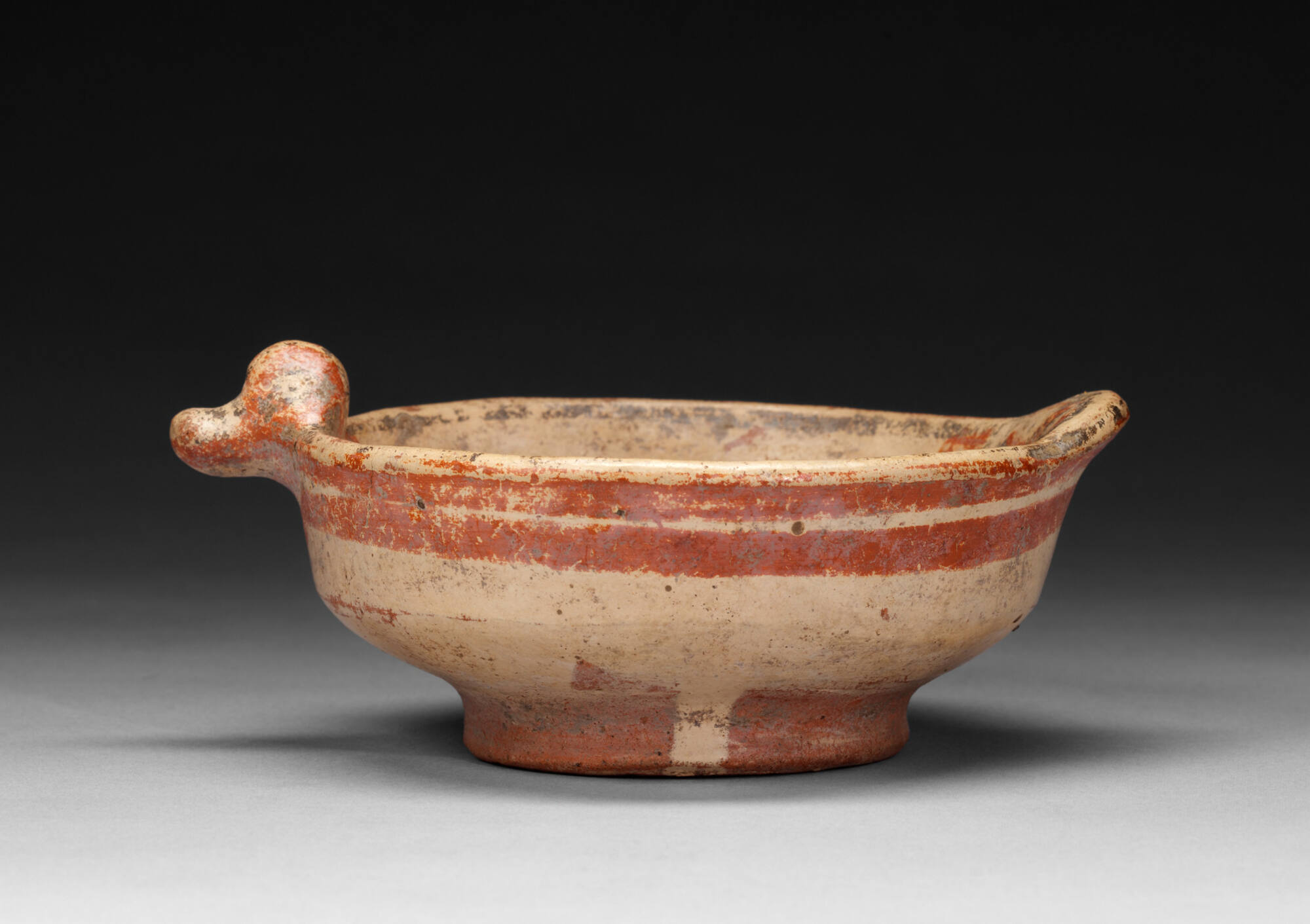Object Details
Culture
Maya (Honduras)
Late Classic Period
Date
AD 500-800
Medium
Earthenware
Dimensions
2 3/8 × 5 1/8 inches (6 × 13 cm)
Credit Line
Gift of Thomas Carroll, PhD 1951
Object
Number
2006.070.423
BRIEF DESCRIPTIONThis is a shallow Late Classic Maya ceramic bowl with the head and tail of a duck o(…)
BRIEF DESCRIPTIONThis is a shallow Late Classic Maya ceramic bowl with the head and tail of a duck on its rim. The term “effigy” is used to describe a sculpture or vessel in the shape of a person or animal.WHERE WAS IT MADE?This Mayan bowl may have been made in the Copán region of what is now Honduras.HOW WAS IT MADE?This bowl was hand-built with the coil method. In this method, a base is made by shaping clay into a flat disc. Then hand formed coils of clay, like ropes, are successively added to one another, building up the walls of the bowl. A tool such as a wooden paddle is used to smooth the sides both inside and out, leaving no trace of the coils. The features of the duck were hand modeled separately.Before the bowl was fired in an earthen pit, it was painted with red, white, and black slip. Unlike resin-based paints applied after firing, which wash off if scrubbed and burn off when heated, slip-painted decoration is relatively resistant to ordinary wear and tear. Slip paint is made by mixing different-colored clays or ground mineral pigments with water. Although some colors are naturally present in the clay, others can be made by adding powdered minerals to clay; for example, minerals high in iron produce rich oranges and reds, while those containing various forms of copper produce blues and greens.HOW WAS IT USED?Except for contact-period ceramics and for some grave goods, it is very difficult to determine who used any given piece of pottery, and under what circumstances. Were some vessels reserved for special guests, or for use by high-status elders? Were they used during special religious ceremonies or rituals? Was their use avoided by certain classes of people, such as children and/or menstruating women? As we venture farther back into the past, answering such questions becomes increasingly difficult. Although it is tempting to draw on information from modern traditional societies and from contact-period chronicles, inferences drawn from such sources must be used with care.WHY DOES IT LOOK LIKE THIS?In addition to the duck head and tail, notice the red and black decorations on the cream-colored ground. It is unusual for Mayan ceramics to combine the effigy form and polychrome painting. The ground color of this piece is uncharacteristically light for a local polychrome bowl from Honduras/Nicaragua, and is more typical of colors found near the site of Copán, located in western Honduras. The design on the bowl interior above the tail is ladder-like and somewhat reminiscent of “bow tie” motifs found elsewhere.ABOUT THE MAYA CULTURE:The Maya civilization was one of the premier civilizations of Mesoamerica, achieving great masterpieces of art and architecture, a sophisticated calendrical system, and a formal system of writing that has only been deciphered in the past several decades. A much more detailed view is emerging of the Mayan city-states located in the Yucatan Peninsula of Mexico, Belize, and adjacent areas of Guatemala and Honduras. Although the exact details of the Maya collapse in the 800’s are still controversial, it appears that excessive warfare and violence, coupled with environmental degradation and the stress of a large population, led to demise of this once-vibrant culture. Populations crashed, with survivors of the urban centers dispersing to more rural areas.













